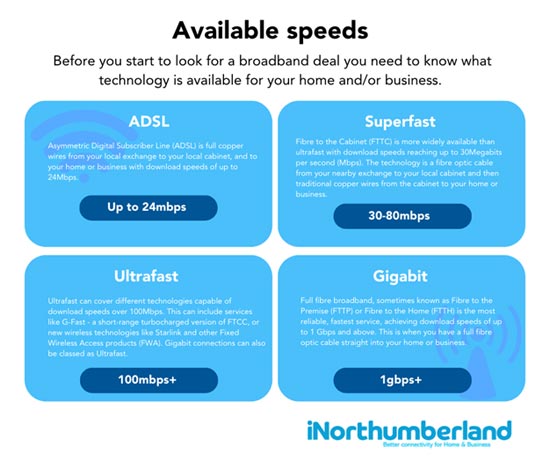Before you start to look for a broadband deal you need to know what technology is available for you your home and/or business.

Asymmetric Digital Subscriber Line (ADSL)
Asymmetric Digital Subscriber Line (ADSL) is full copper wires from your local exchange to your local cabinet, and to your home or business with download speeds of up to 24Mbps.
Superfast
Fibre to the Cabinet (FTTC) is more widely available than ultrafast with download speeds reaching 30-80Mbps. The technology is a fibre optic cable from your nearby exchange to your local cabinet and then traditional copper wires from the cabinet to your home or business.
Ultrafast
Ultrafast can cover different technologies capable of download speeds over 100Mbps. This can include services like G-Fast - a short-range turbocharged version of FTCC, or new wireless technologies like Starlink and other Fixed Wireless Access products (FWA). Gigabit connections can also be classed as Ultrafast.
Gigabit
Full fibre broadband, sometimes known as Fibre to the Premise (FTTP) or Fibre to the Home (FTTH) is the most reliable, fastest service, achieving download speeds of up to 1 Gbps and above. This is when you have a full fibre optic cable straight into your home or business.